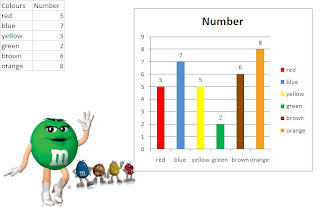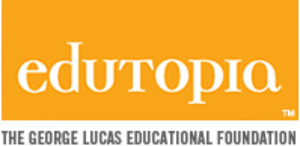This week we learned that it is not enough simply to plonk our students down in front of computers and expect them to learn. For learning to take place, classroom activities have to achieve the four principles of Education Soundness which are:
This means that the activities/software that are used in the classroom must have been designed with an aim of guiding students towards a specific goal (such as learning about similes - http://econtent.thelearningfederation.edu.au/ec/viewing/L1174/index.html)
The software must have content integrity - it must be correct! Therefore teachers should not rely solely on wikipedia or google to provide accurate information.
Activities must be usable - when first learning with arrays for graphing or multiplying purposes (such as our m&ms activity), it would be more practical for students to sort small light objects such as m&ms or marbles than something they did not have access to such as animals or the weather. Students can progress towards these more abstract concepts once they have mastered the basics. It is important that any software used in the classroom is fast, as you don't want kids wasting time sitting at a computer waiting for program to load.
Finally, any educational software within Australian classrooms must have address accessibility which means that even isolated remote classrooms should have speedy access.
http://www.thelearningfederation.edu.au/
The above website has various activities appropriate for all domains, and while they do not replace the teacher or hands-on activities, I think they would be a great way of catering for the advanced students, while any struggling students could use more one-on-one teacher time. While I truly believe that information gained online is valuable, I intend to make sure that my students properly grasp the concepts I am trying to teach, rather than rely on students independently using online activities. I will also have to ensure that any computer time is not solely provided to the "good" kids as a reward, but that all of my students have access to online activities.
Our first workshop activity this week was working with M&Ms. This activity builds up the students' skills of counting, sorting, graphing, colour coding, and using MS Excel. In classrooms we must remember to beware of allergies, and use beads or marbles instead if it's an issue.
If our future classrooms don't have enough computers for everyone get big paper on the floor and kindergarten squares. The following is step by step instructions for the activity:
Guess about packet - will there be more yellow because it's a yellow packet? Weigh packet.
Open packet - sort into colour.
MAIN IDEA - WHAT IS THE ROLE OF GRAPHS??? WHY IS IT USED IN SOCIETY???
Count how many of each colour. Put data into MS Excel.
Highlight text and convert into graph. INSERT, COLUMN. To change columns to different colours, right click, format data point, fill, solid fill, choose colour.
Right click on individual column, add data label, will show how many.
Go to M&M website and copy & paste graphics to your spreadsheet.
Survey - what's your fave m&m colour? get data and convert into graph.
could also do colour of hair, eyes, cars (from school parking lot) brands.
DON'T DO THIS ACTIVITY AS A ONE-OFF...Follow it up tomorrow with another graphing activity.
The final activity we did this workshop was to create a diagram using the inspiration software and Dust Echoes.
http://www.abc.net.au/dustechoes/
Dust Echoes is a series of twelve beautifully animated dreamtime stories from Central Arnhem Land, telling stories of love, loyalty, duty to country and aboriginal custom and law.
As well as exposing our students to Indigenous culture that they may not already be aware of, this activity enriches their English skills as it focuses on what is necessary to create an informative story and how they are able to play with words, sentences and phrases to create the same or different meanings.
I found this activity similar to one we performed in an English workshop when we copied a paragraph onto butcher's paper then cut out the words and had to rearrange them so that it still made sense. The above inspiration activity could be set up to co-incide with the butcher's paper activity to advance the students' reading skills.
1. Learner Focus
2. Content Integrity
3. Usability
4. Accessibililty















